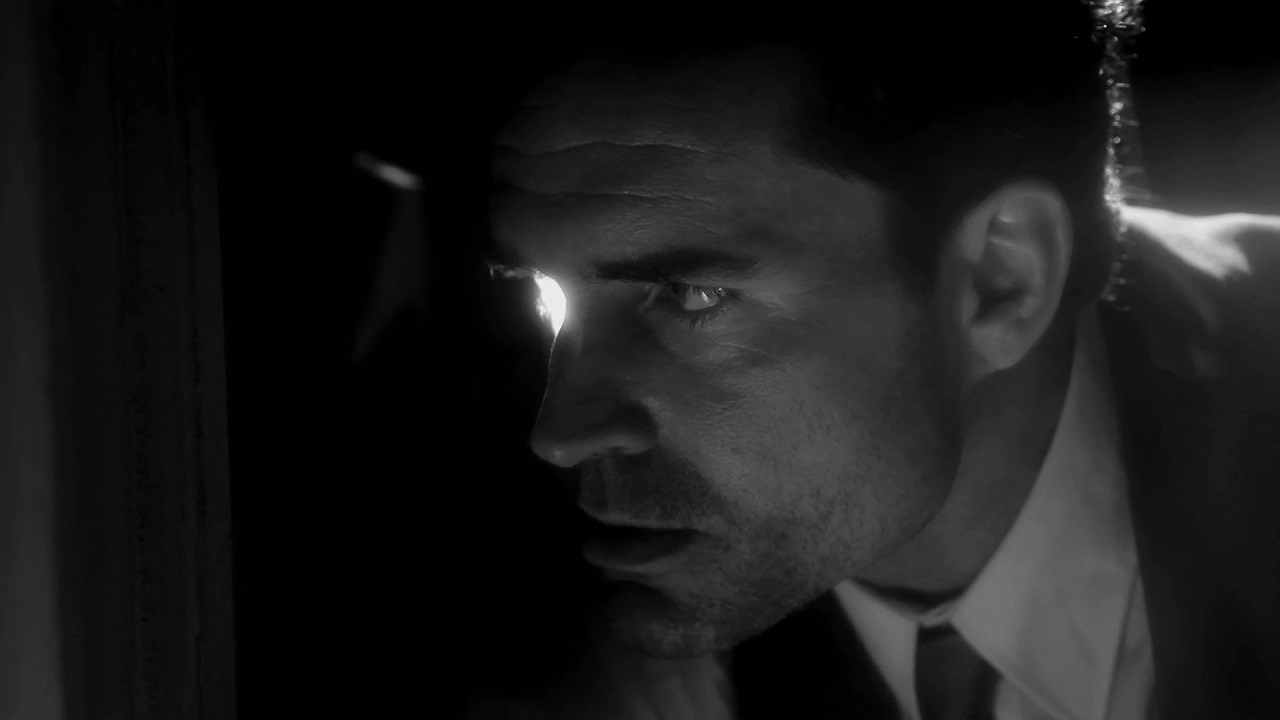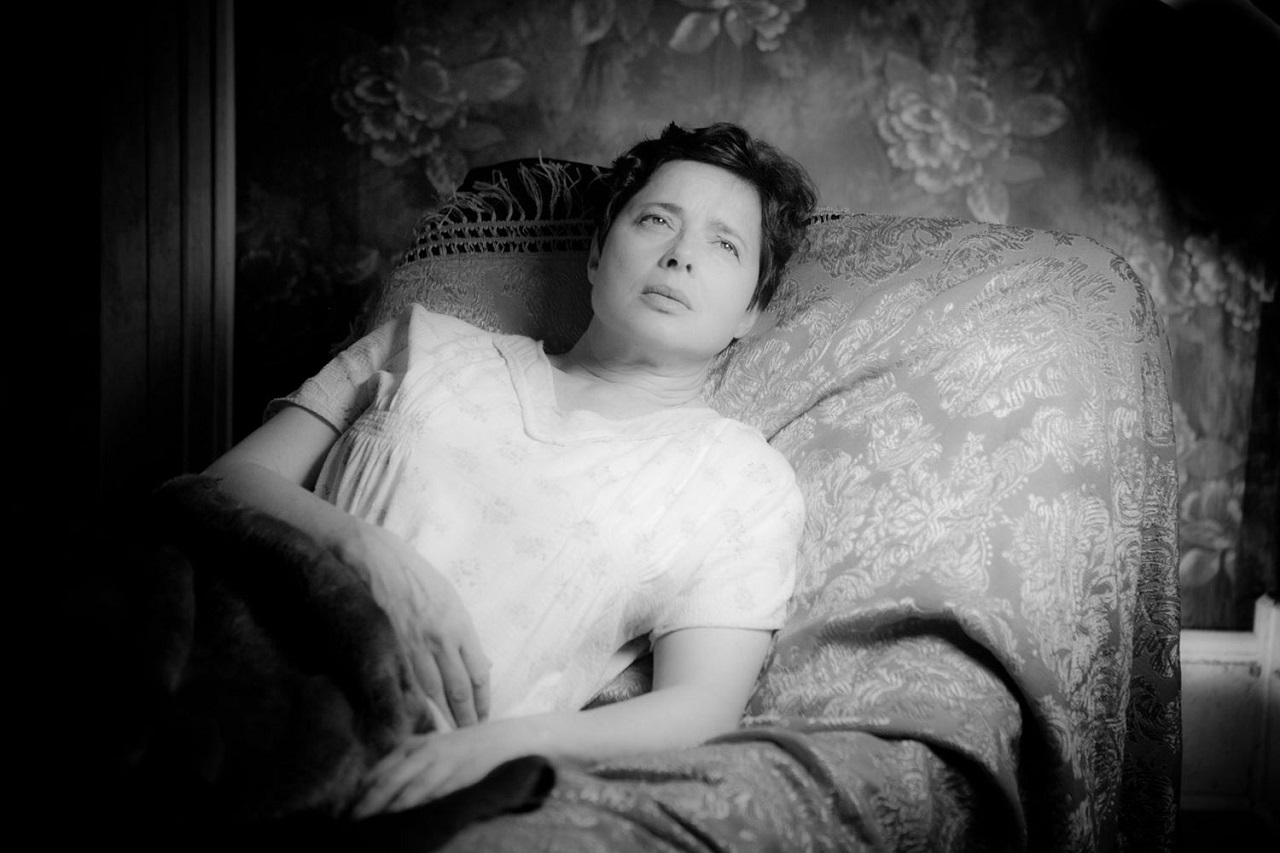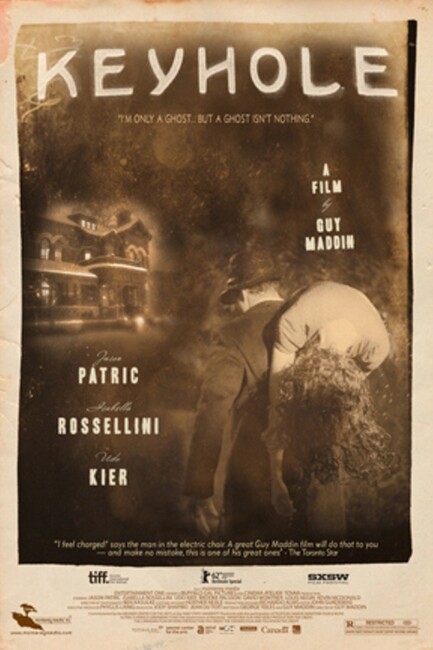Crew
Director – Guy Maddin, Screenplay – Guy Maddin & George Toles, Producers – Jean Du Toit, Phyllis Laing & Jody Shapiro, Photography (b&w) – Banjamin Kasulke, Music – Jason Staczek, Production Design – Ricardo Alms. Production Company – Cinema Atelier Tovar Ltd/Buffalo Gals Pictures.
Cast
Jason Patric (Ulysses Pick), Isabella Rossellini (Hyacinth Pick), Brooke Palsson (Denny), Udo Kier (Doctor), David Wontner (Manners), Theodoros Zegeye-Gebrehiwot (Heatly), Louis Negin (Calypso/Camille), Olivia Rameau (Rochelle), Tattiawna Jones (Lota), Darcy Fehr (Ned Pick), Daniel Enright (Big Ed), Johnny Chang (Chang)
Plot
Mobster Ulysses Pick returns to his home where his old gang and several hostages wait. Some of them have been killed. Ulysses searches through the house for his wife Hyacinth who waits in a bedroom with her father who has been chained naked to the bed. Ulysses’ search stirs up the ghosts in the house, while he must deal with the contorted jealousies and fetishes of the others present.
Canada’s Guy Maddin is a living work of art. Since the late 1980s, the Winnipeg-based Maddin has charted out a unique body of film. His work is almost all surrealist homages to silent cinema, comes shot in black-and-white and features wildly melodramatic plots of psycho-sexual contortion played out amid absurdist sets and costuming. Maddin’s feature-length films so far include Tales from the Gimli Hospital (1988), Archangel (1990), Careful (1992), Twilight of the Ice Nymphs (1997), Dracula: Pages from a Virgin’s Diary (2002), Cowards Bend the Knee, or the Blue Hands (2003), The Saddest Music in the World (2003), Brand Upon the Brain! (2006), My Winnipeg (2007), The Forbidden Room (2015) and The Green Fog (2017).
Keyhole was Guy Maddin’s tenth feature-length film and somewhat of a departure for him – at least in terms of what we expect from a Maddin film. For one, he appears to have abandoned the cod-silent movie style of his previous films for a more recent form of cinematic pastiche – modelling the film after a 1940s crime drama.
Furthermore, Keyhole is less of a stylistically exaggerated film – it is without the bizarrely over-ornamented sets and costumes or the hysterically bizarre deadpan purple prose. While Keyhole stills comes in the surrealist tradition, it is relatively more realistic in its form of presentation, at least in terms of visual style. Maddin also has more of a name cast – the most well-known names he has worked with since Twilight of the Ice Nymphs, which includes former 80s teen pretty boy Jason Patric, regular Maddin collaborator Isabella Rossellini and cult Austrian actor Udo Kier.
What we have feels like some obscure arthouse collision between a forgotten 1940s crime melodrama and a French New Wave film. In this latter respect, one keeps being reminded of something like Celine and Julie Go Boating (1974), or perhaps more so of the Quay Brothers films, in particular Institute Benjamenta; or This Dream People Call Human Life (1995), a similar black-and-white shot film that had people wandering a labyrinth of rooms in search of meaning. That said, Keyhole manages to be even more opaque than Celine and Julie and about as indecipherable as a typical Quay Brothers film – when you enter that kind of territory, you have travelled a loooooong way beyond commercial filmmaking into that which needs a series of primer notes and a road map to figure out what is happening, something you could never say for Guy Maddin’s other films.


And that precisely is the problem I had with Keyhole. It seems that Guy Maddin has abandoned what he does well – kitsch surrealism, deadpan dialogue and tall tales, his hysterically melodramatic obsession with psycho-sexuality and contorted family secrets. More so, Keyhole ends up being a film without a story. It is never particularly clear what is going on, while we only guess from Jason Patric’s comment at the end that everybody in the house is a ghost. But who is and isn’t a ghost, or even if everybody is is confusing.
Nor does it become clear what the relationships between the large line-up of characters in the house all are. The film keeps happening as though Maddin and the cast were improvising and it lacks the uniqueness of other Guy Maddin films. That unfortunately means that we must count Keyhole as Guy Maddin’s most disappointing work yet. Still, one disappointment in a career that goes back to the 1980s is not bad going.
On the plus side, Keyhole is one of the most beautifully shot 1940s crime dramas you will ever see. In its crisp theatrical print, Maddin’s camera paints in flows of slow-motion movement, exquisite closeups and constantly wavering lighting schemes. It is less a crime drama with the four-square conveyor belt set-ups that production line directors of the 1940s used than it feels like a haunted house story painted as the cinematic equivalent of an abstract impressionist.
There are still some of Guy Maddin’s hilarious deadpan lines: like one of the opening lines where we are introduced to people at the house and they are ordered “those of you who have been killed, up against the wall,” or Isabella Rossellini’s claim “Calypso says one of my children’s heads is in the [flower] pot.”


